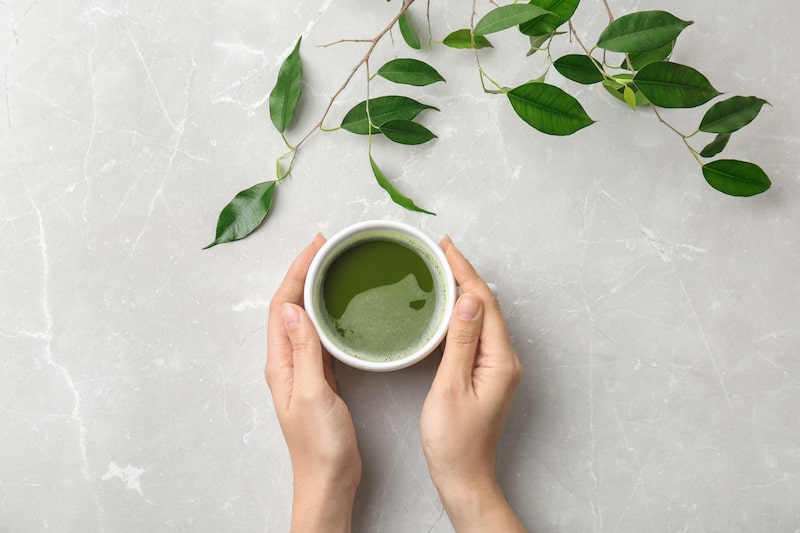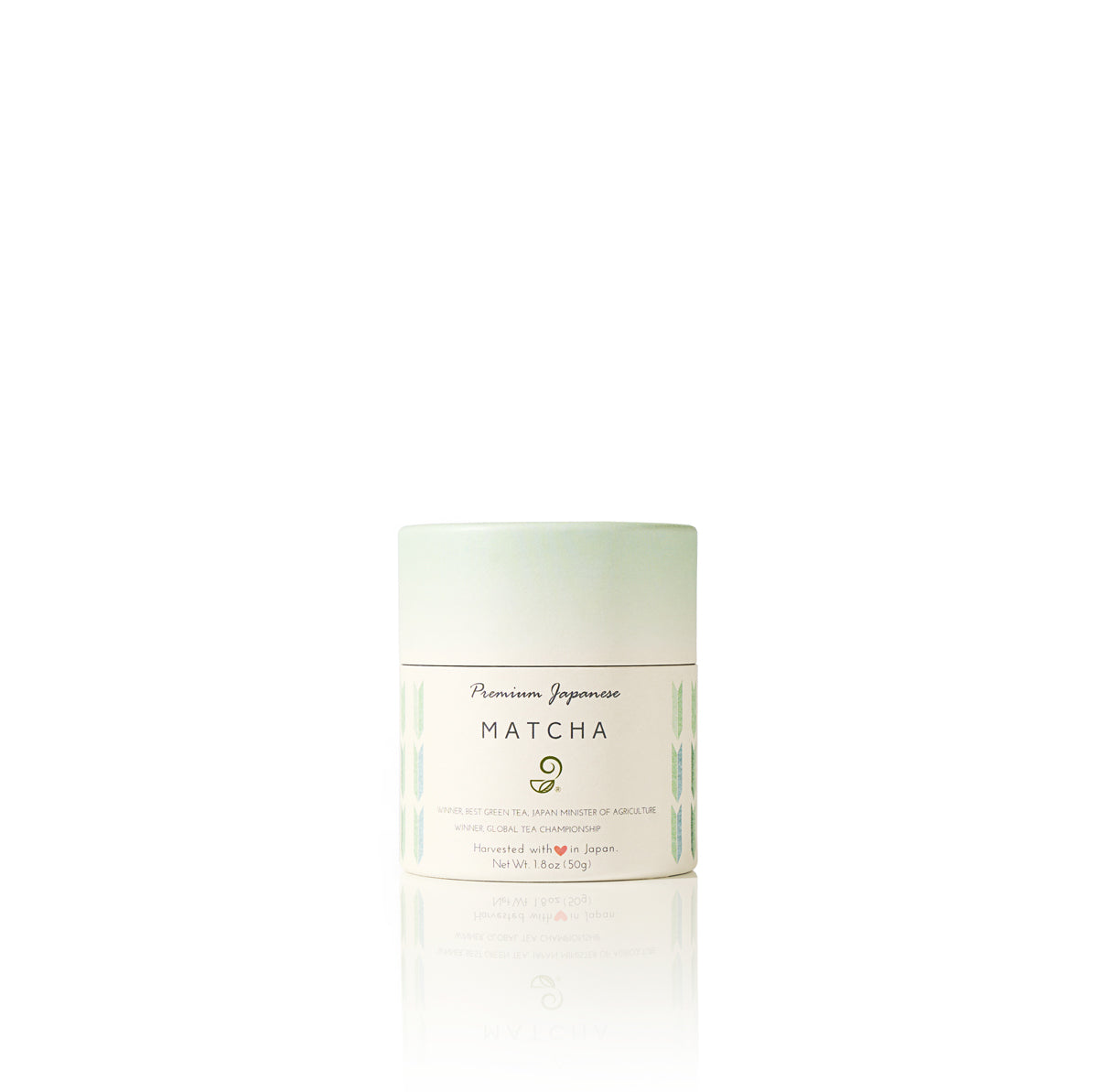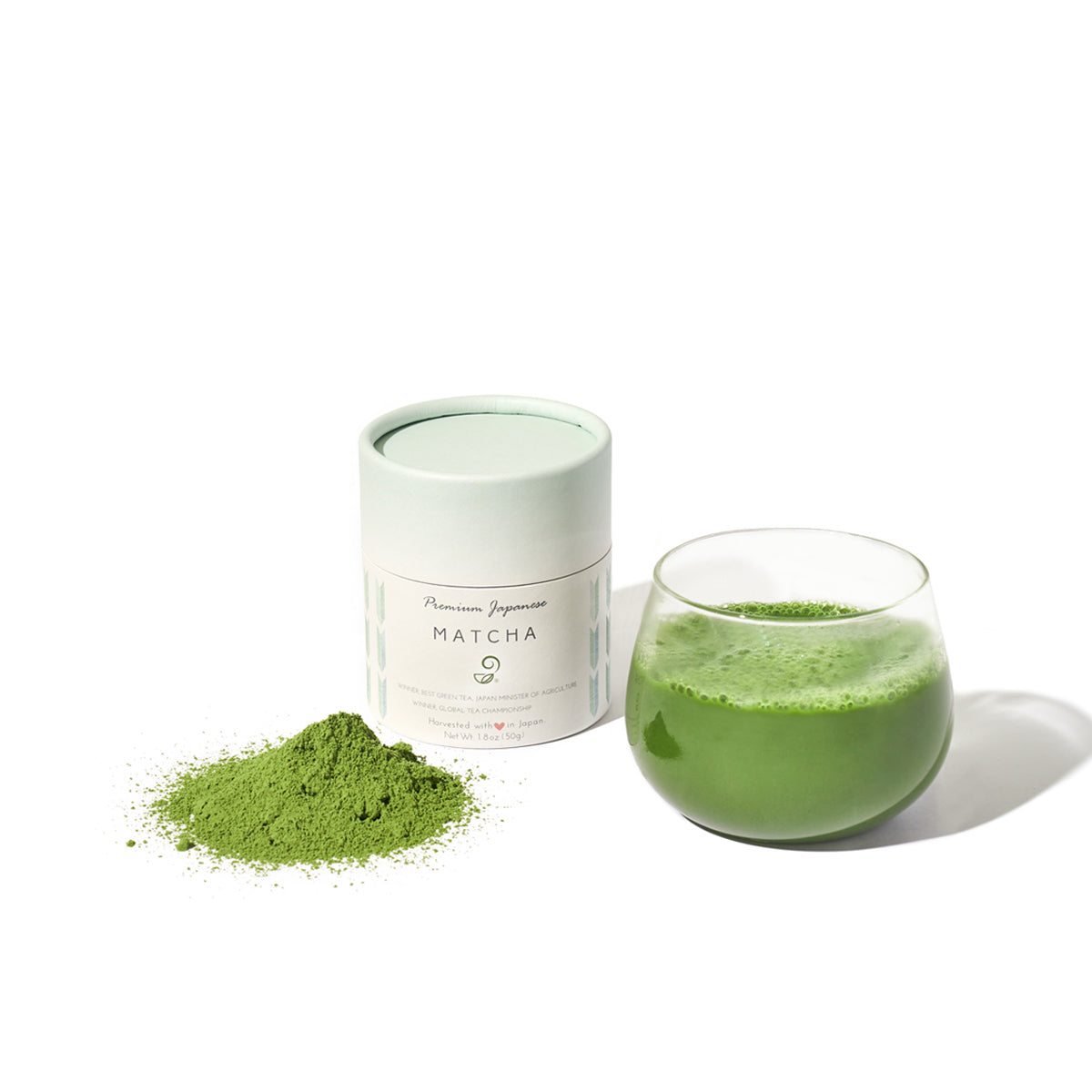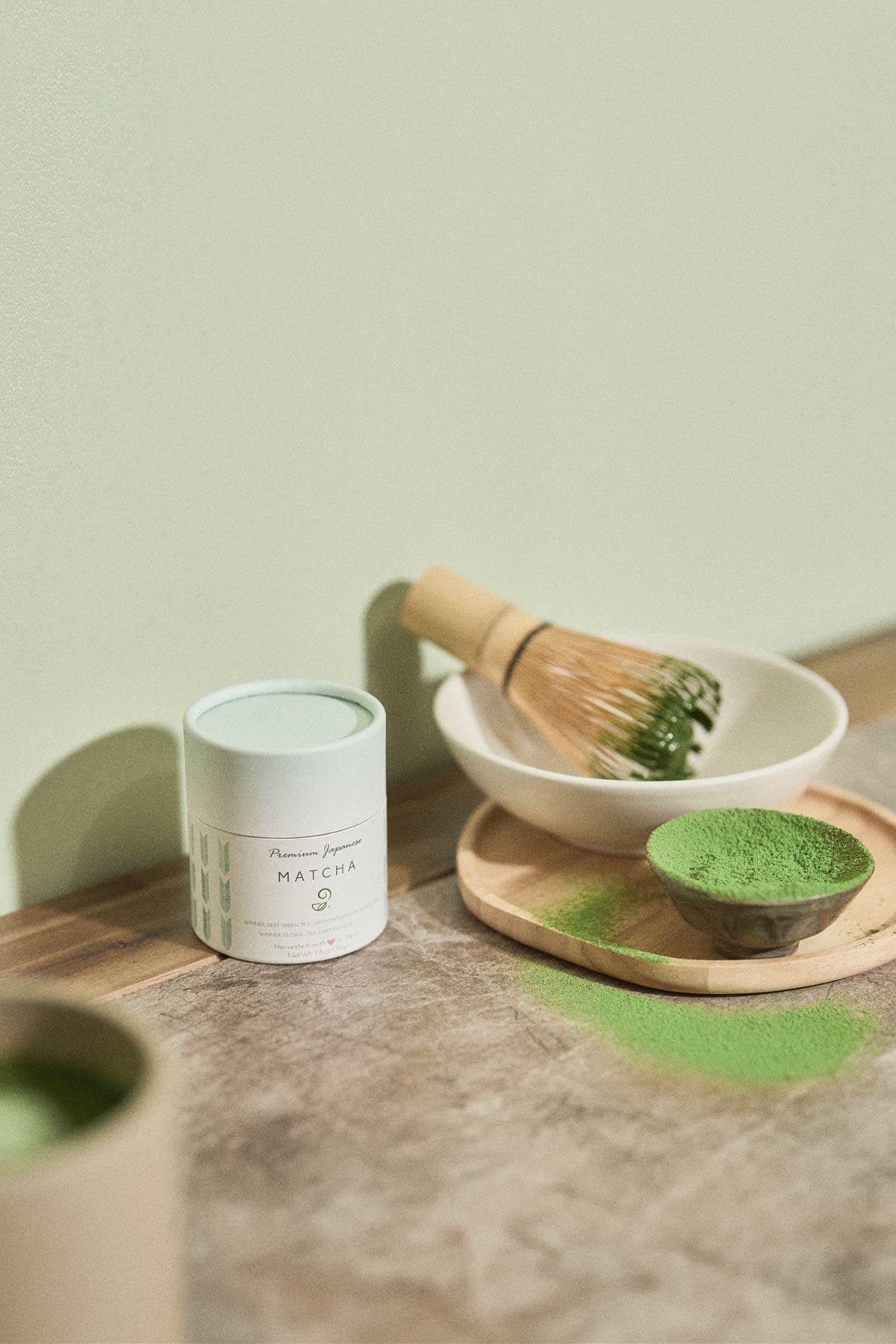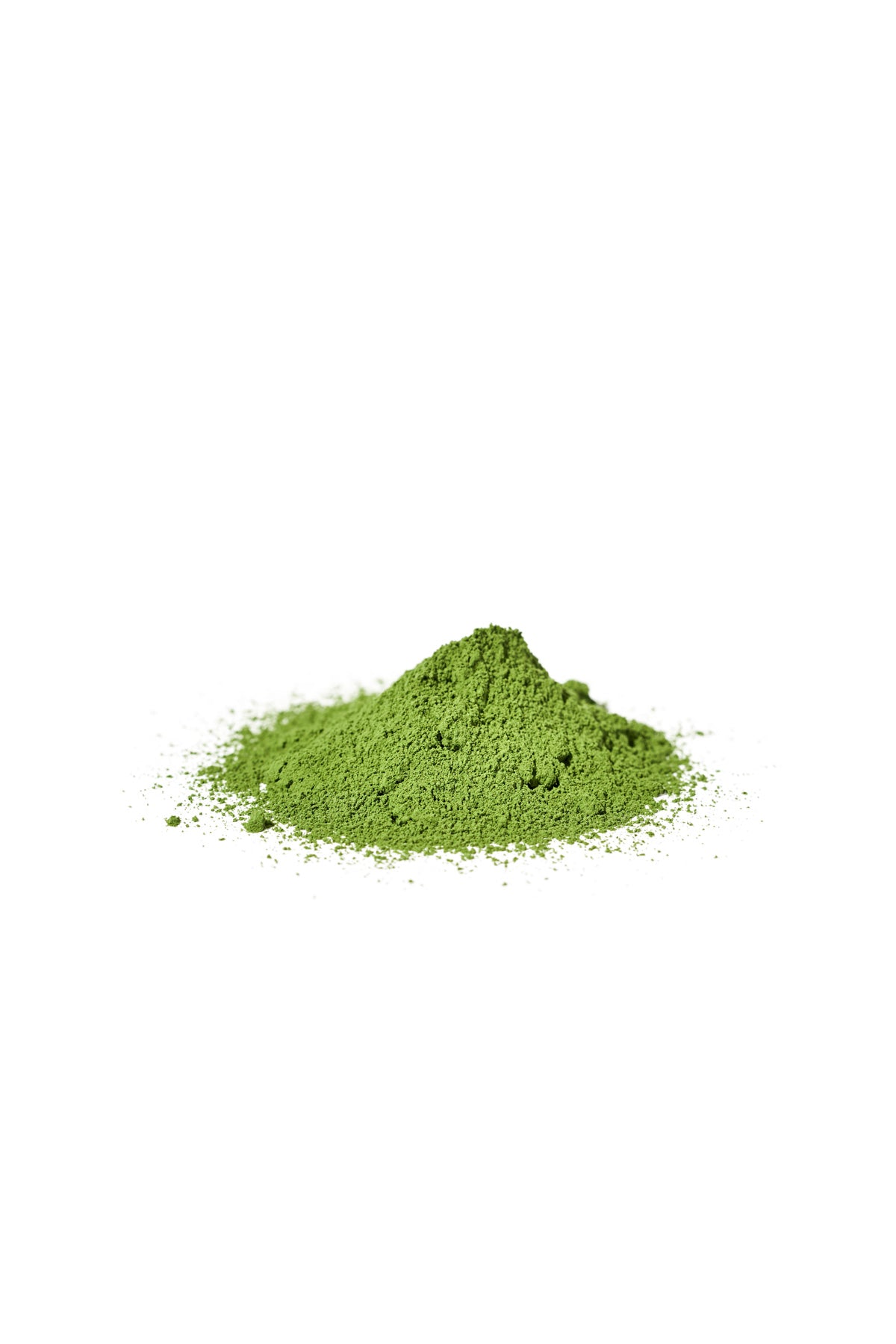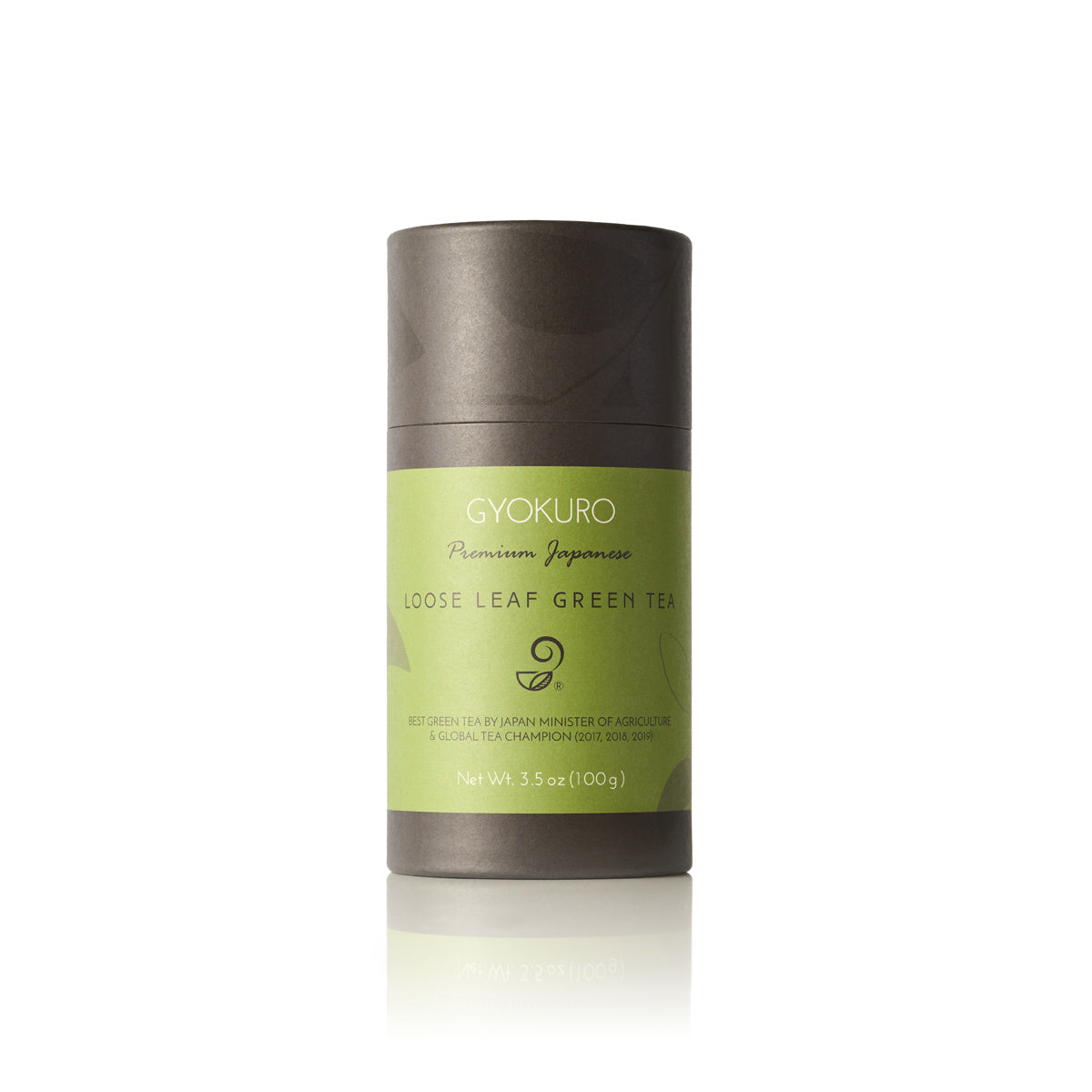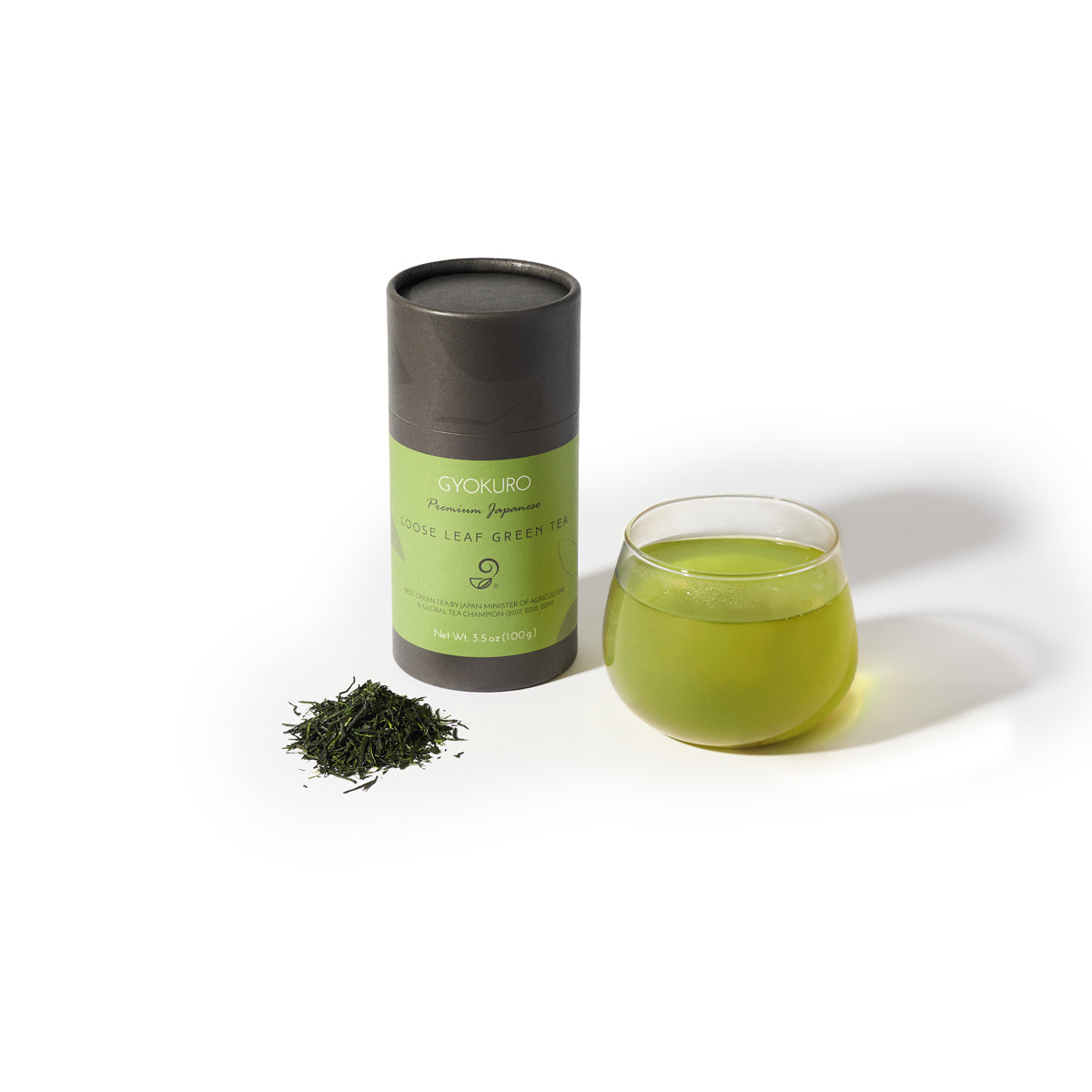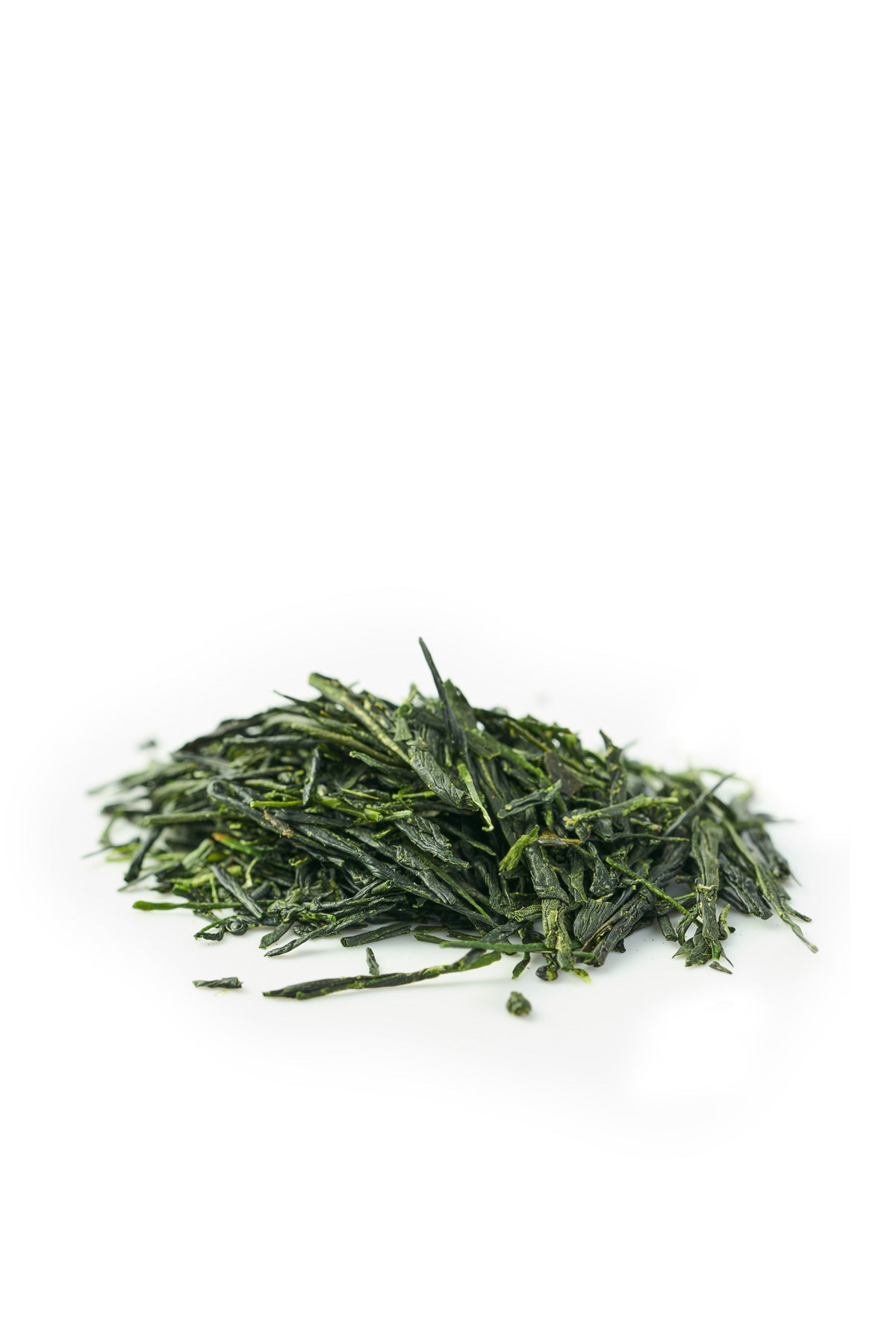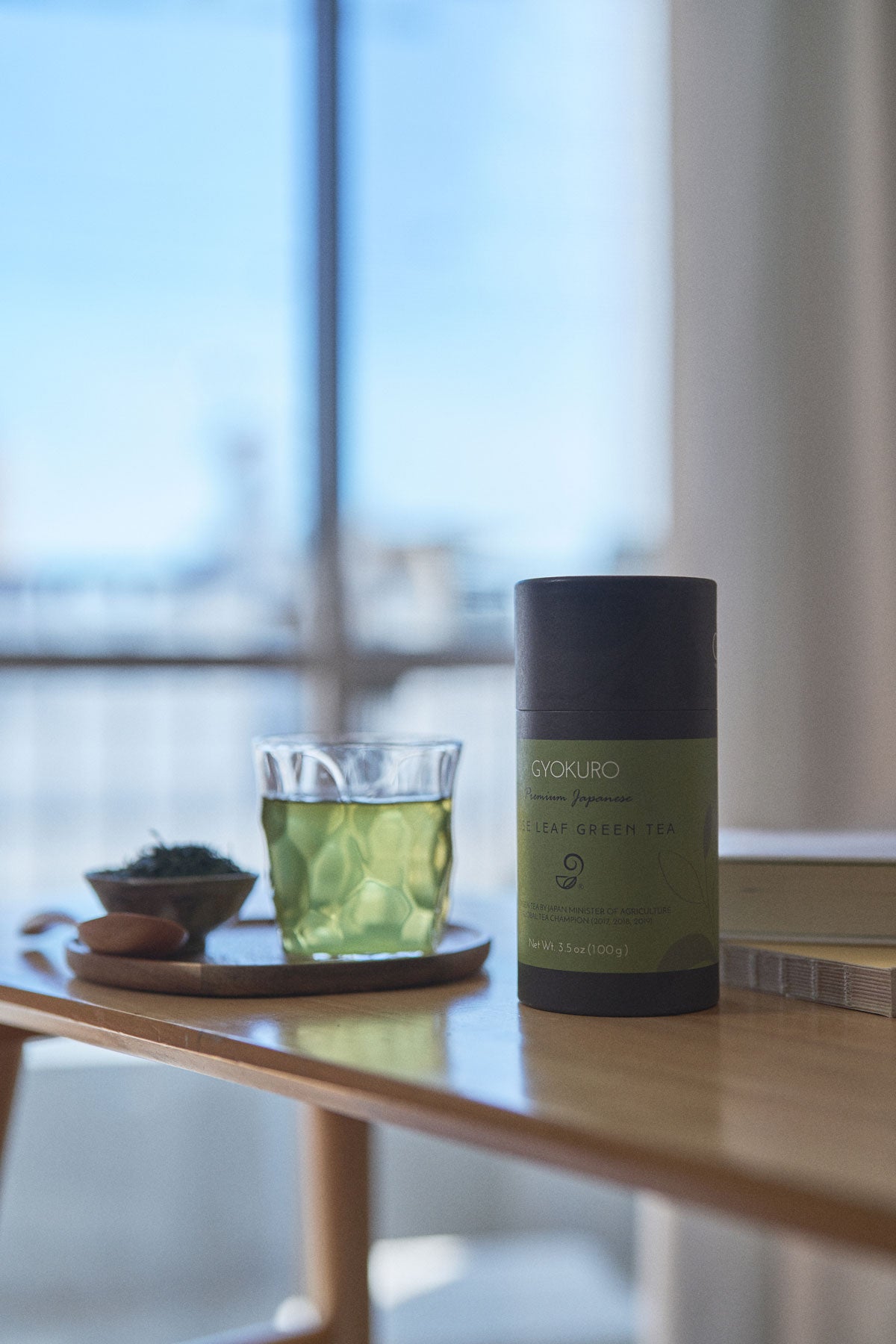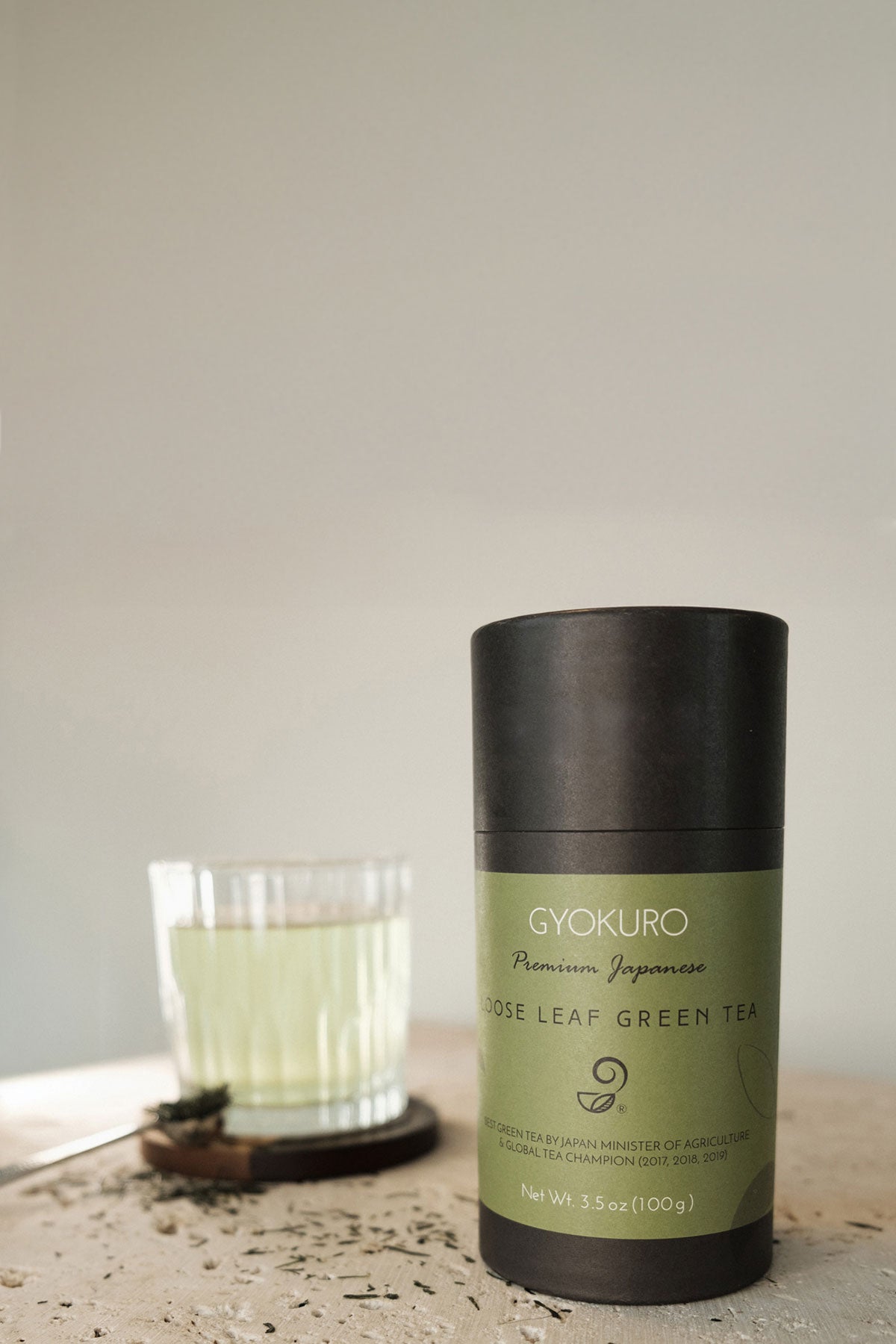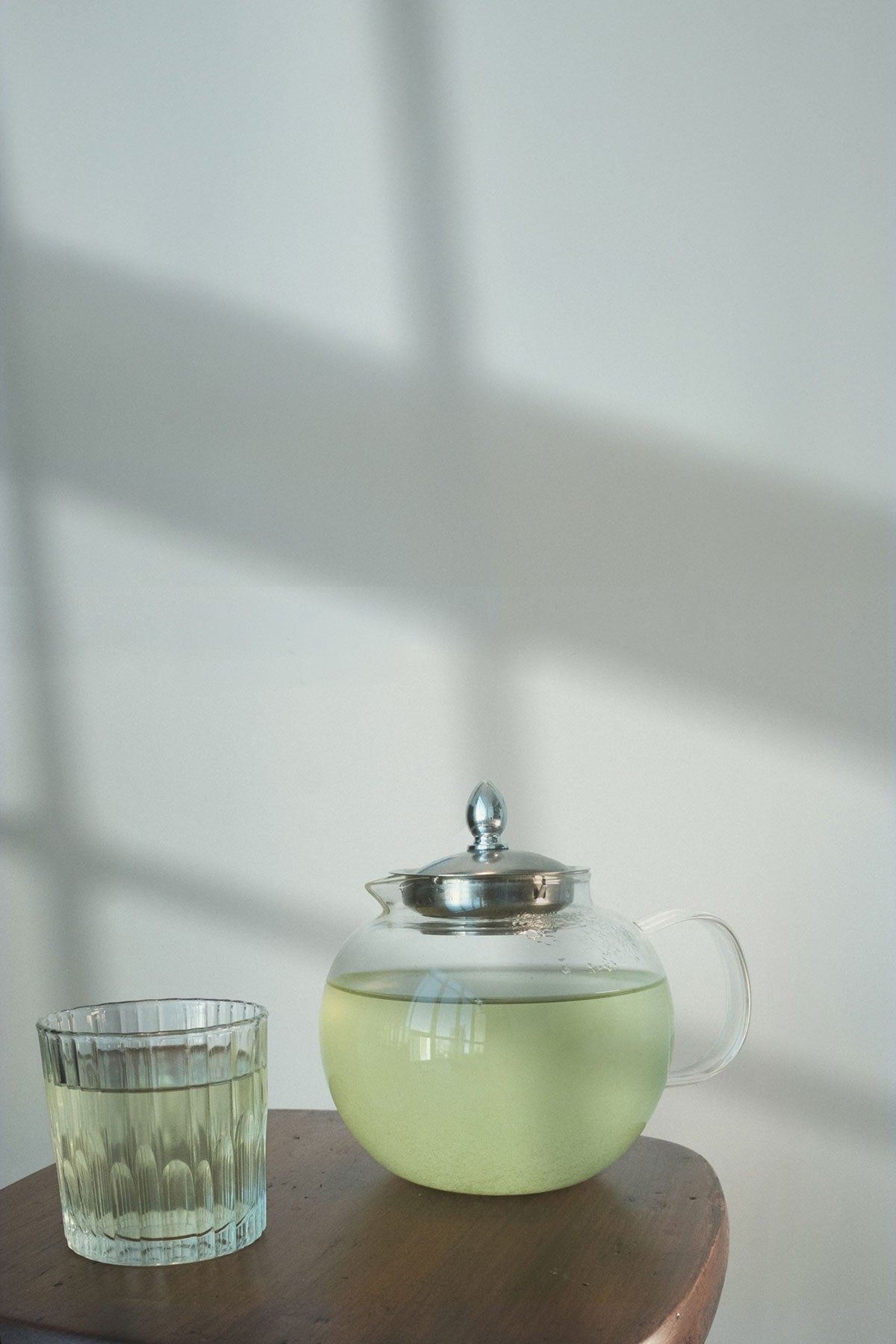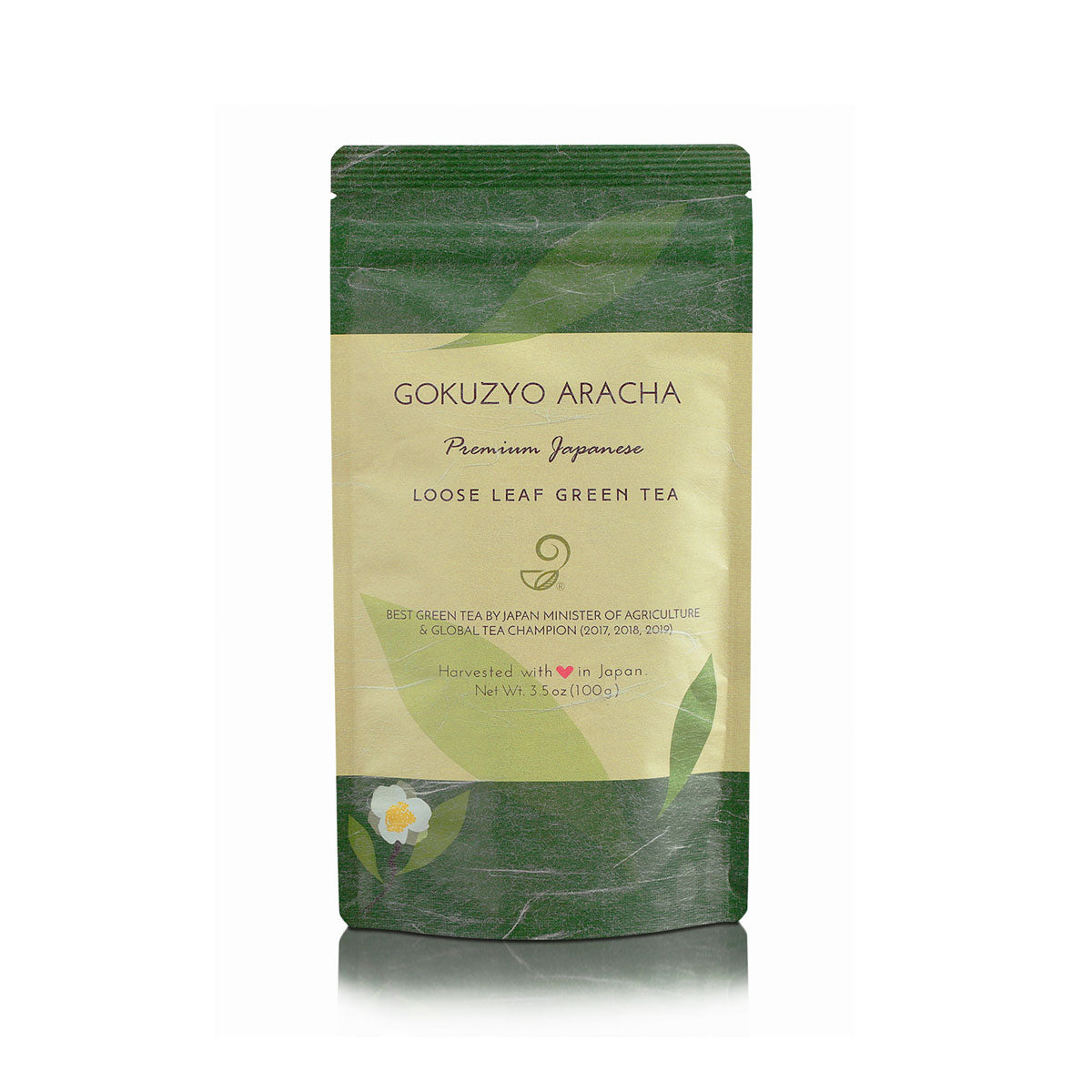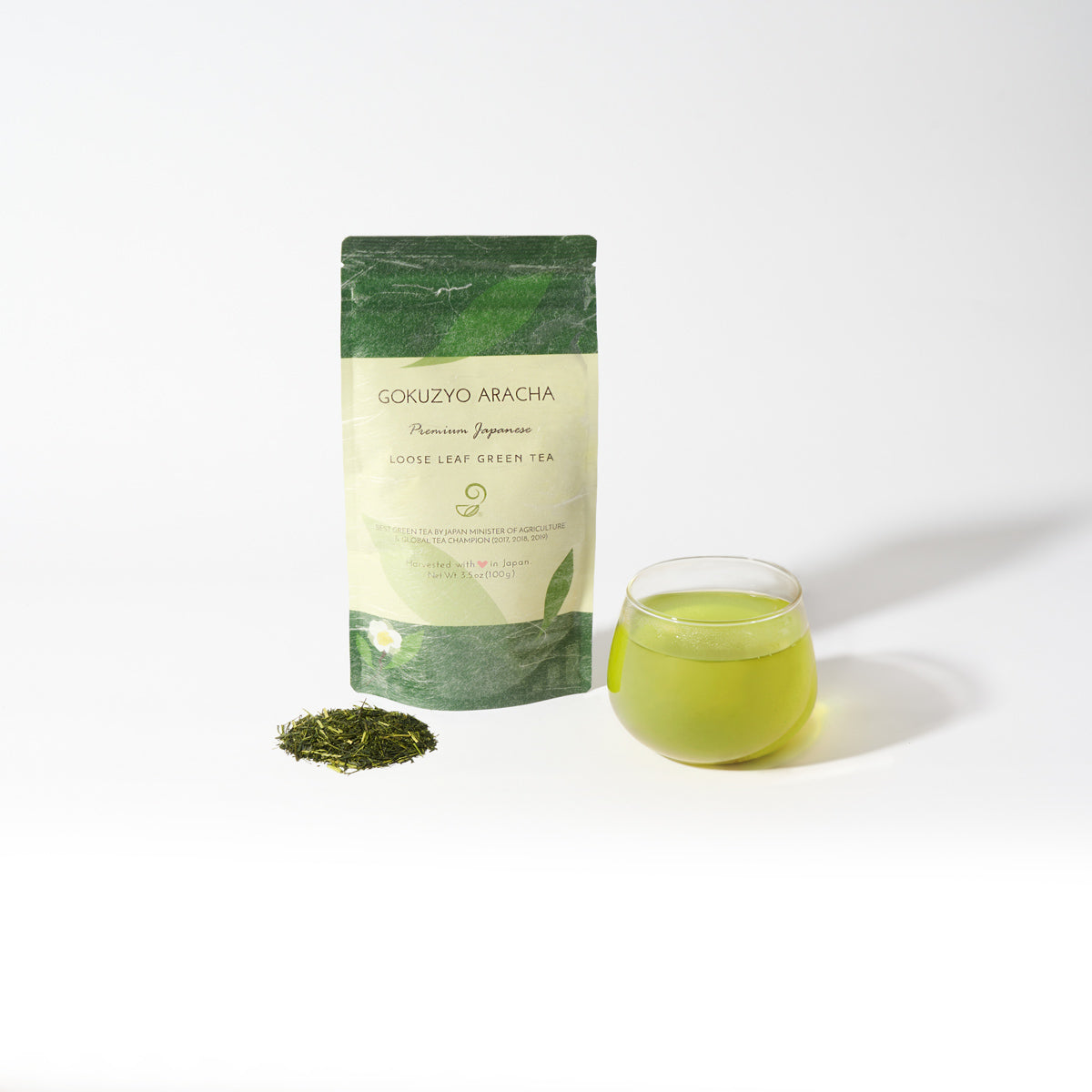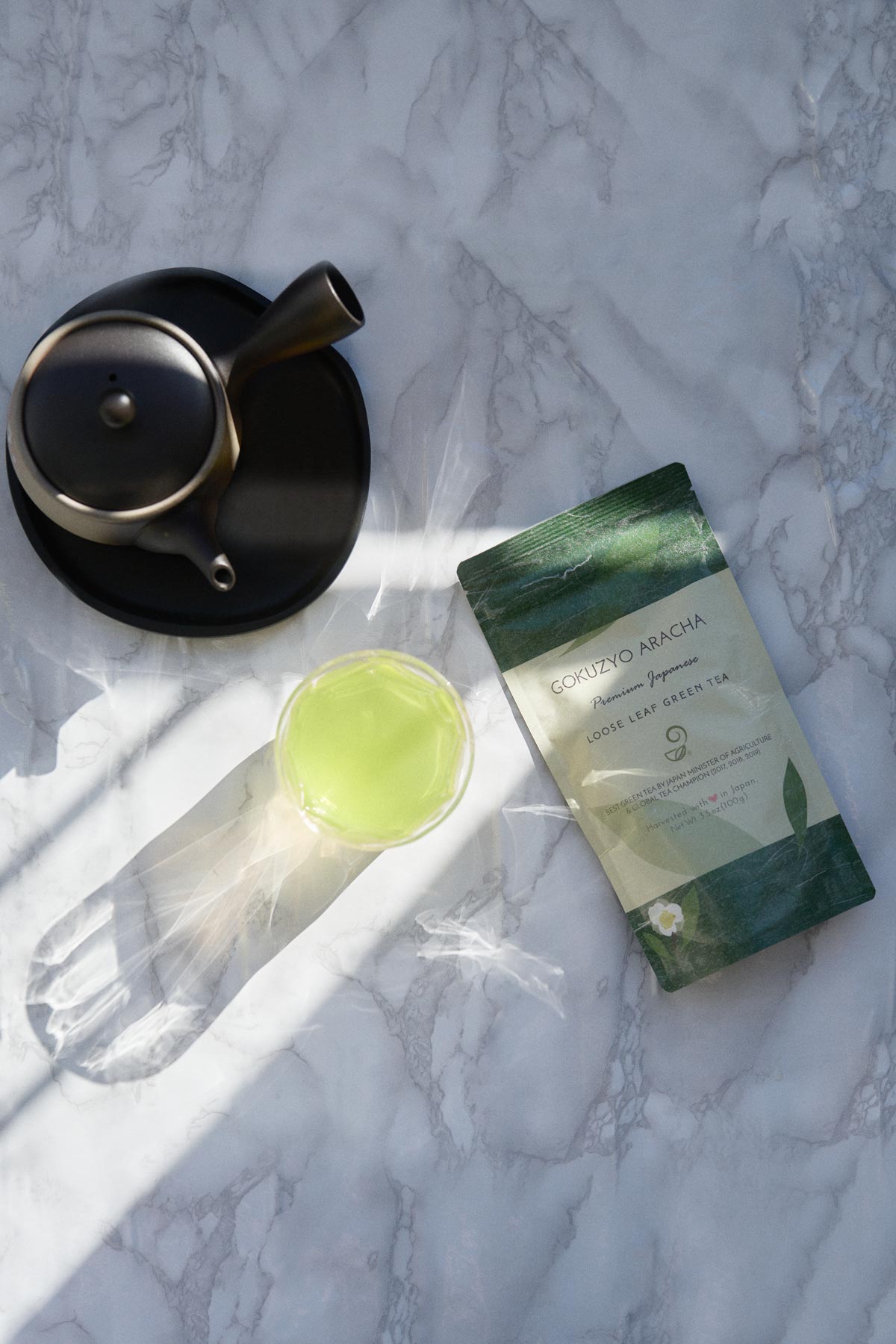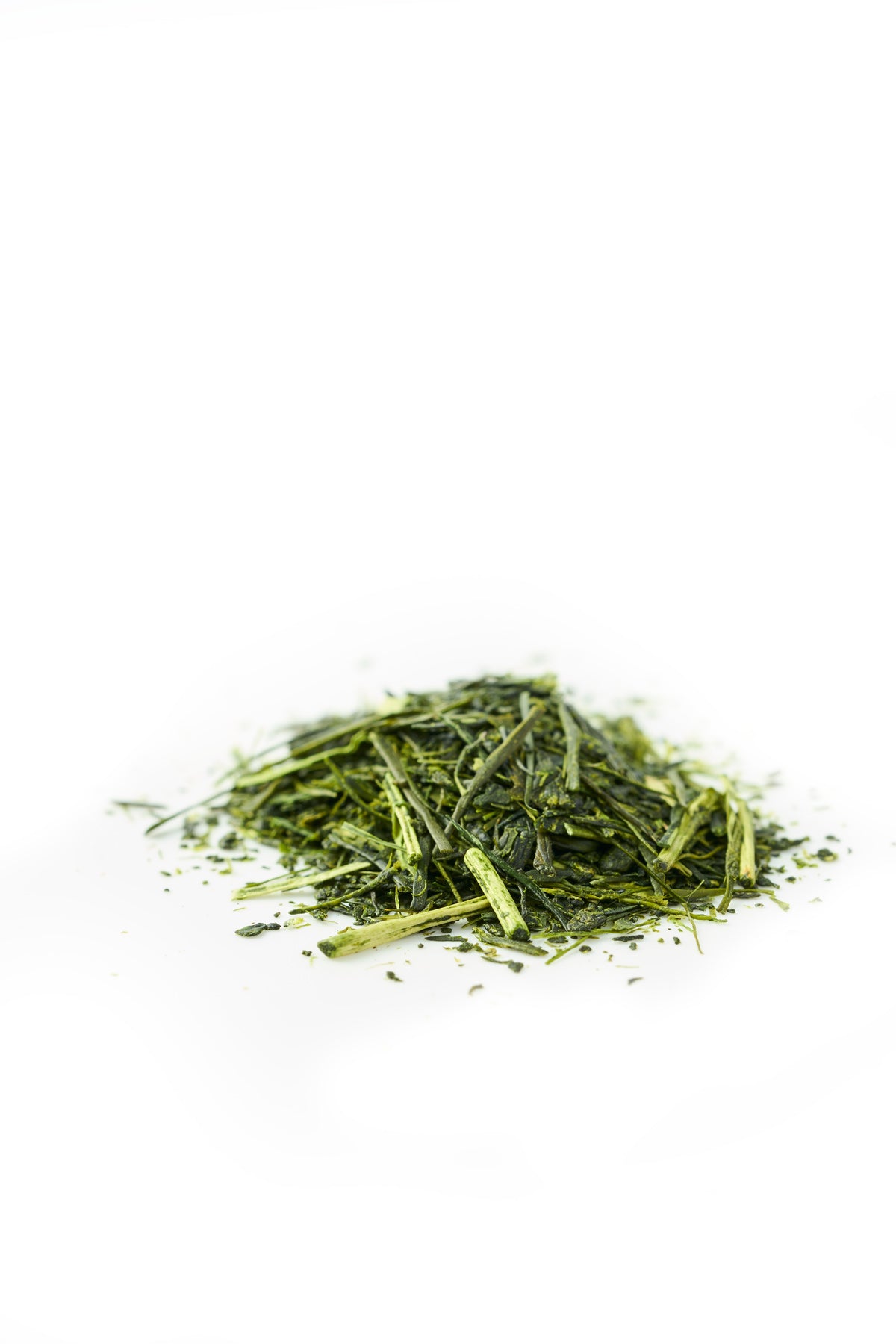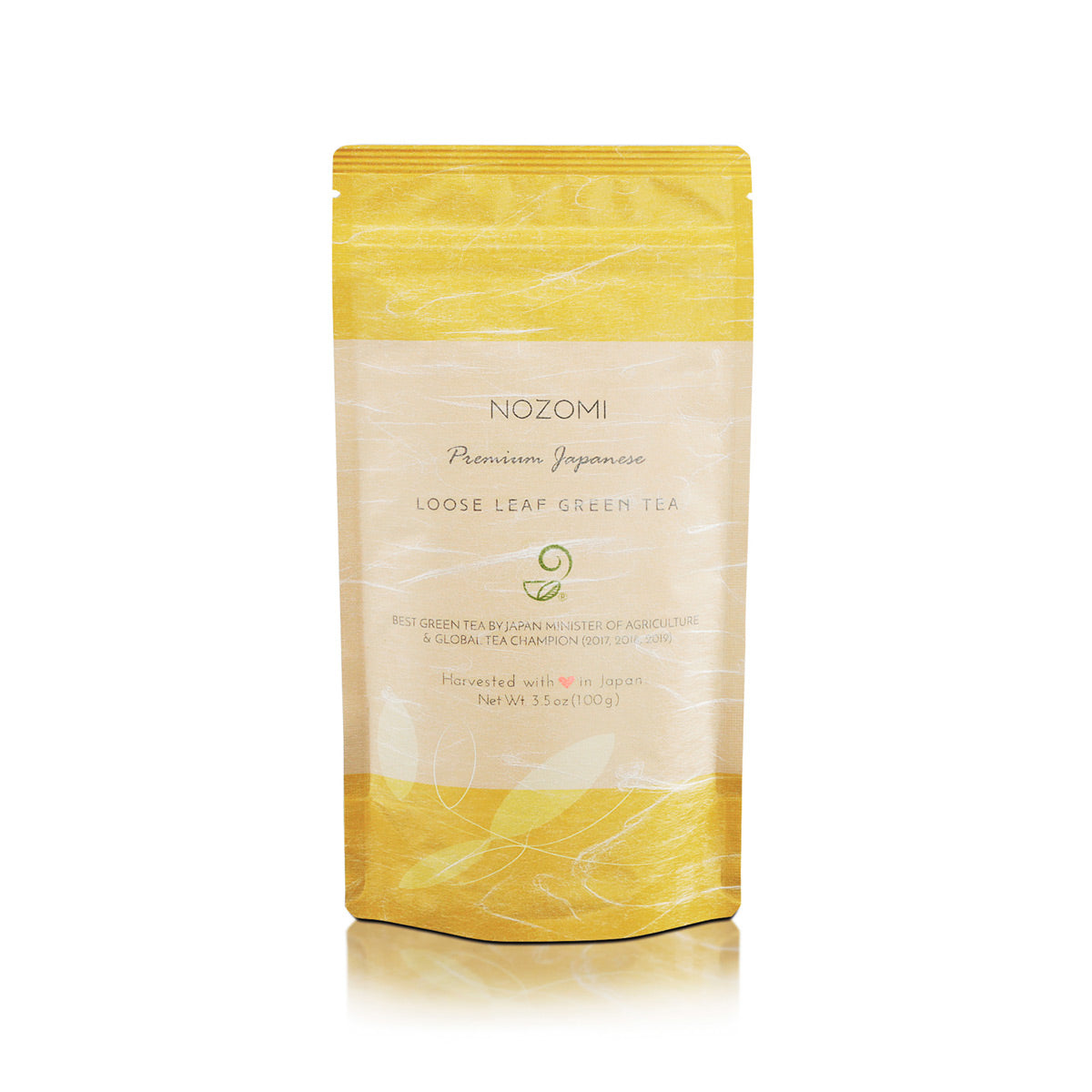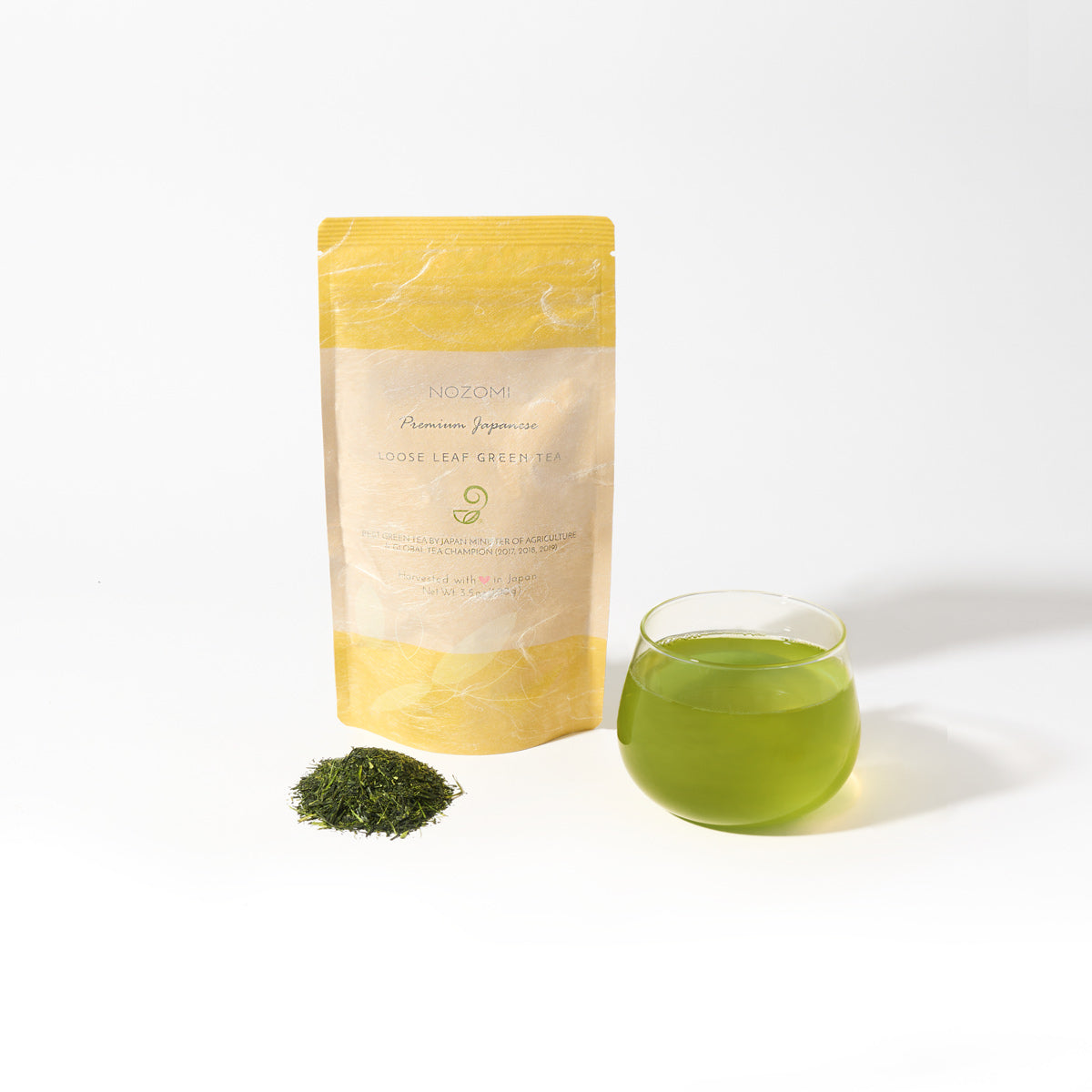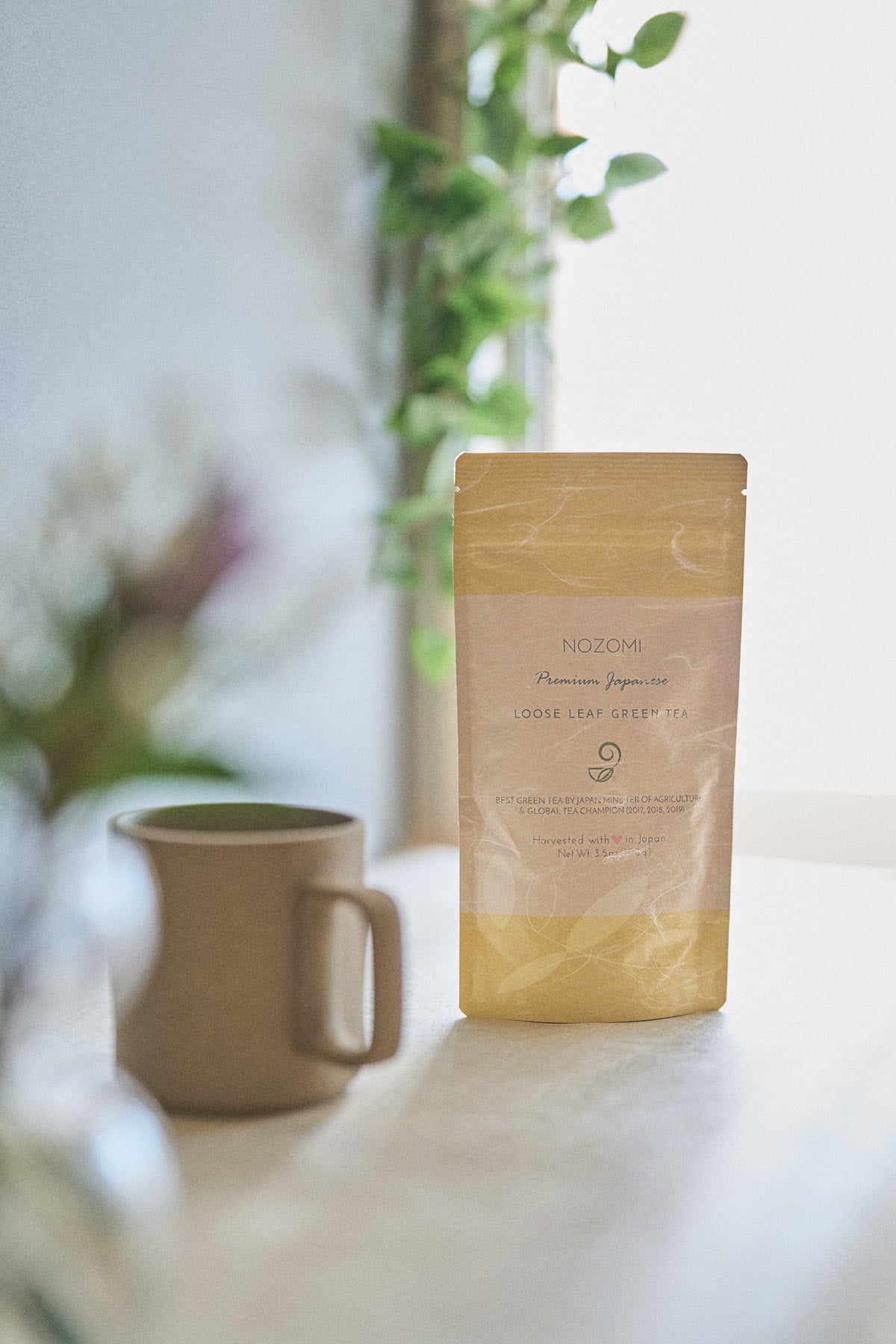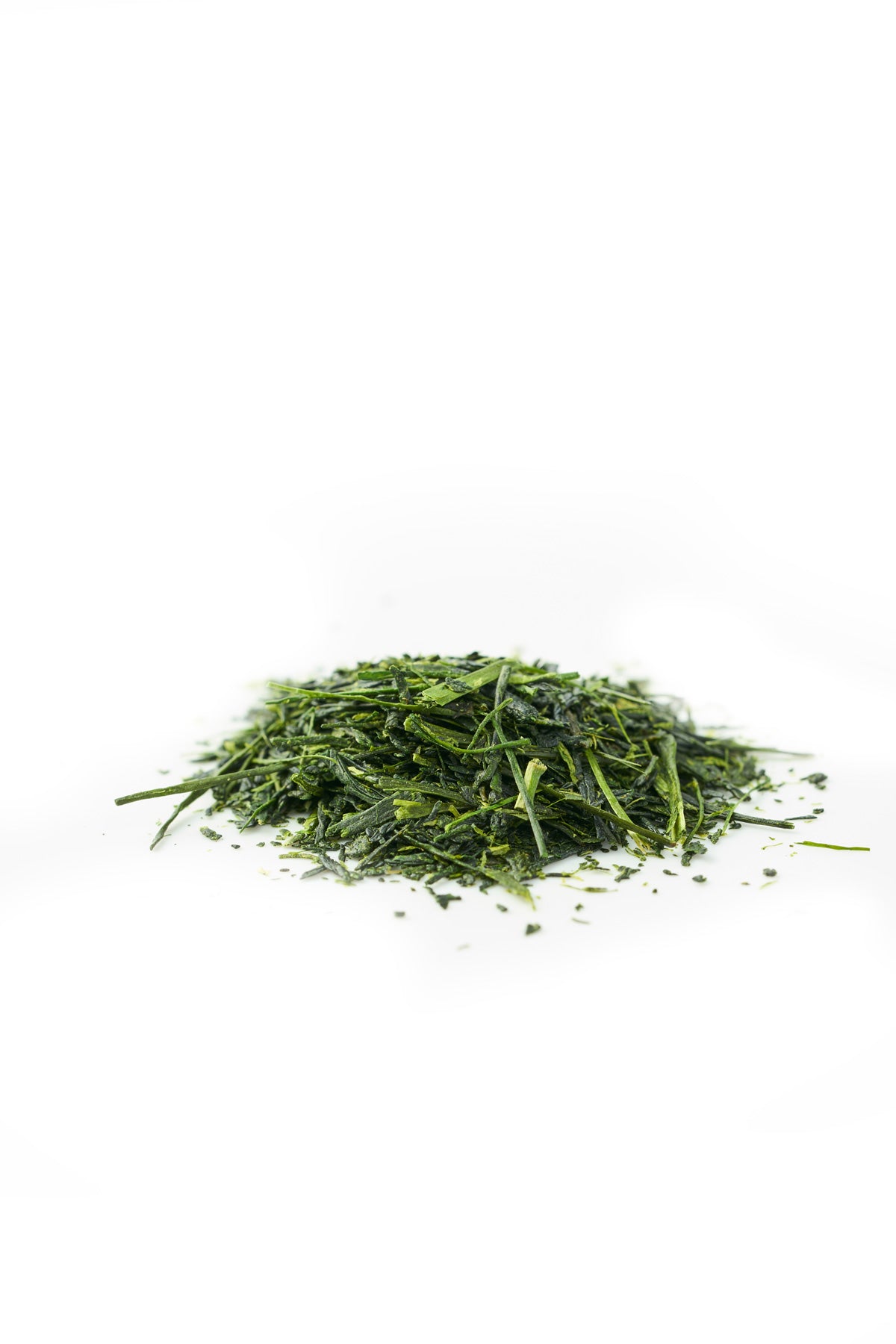Astringency (渋み) in tea is often misunderstood. It's often confused with the unpleasant taste of bitterness. But in truth, it is actually a physical sensation rather than a taste at all. It is that puckering, dry feeling you experience when you drink red wine or consume unripened fruits, such as green bananas. It can affect the palate and the roof of the mouth. While it usually occurs in tandem with bitter tastes, they are separate from each other.
When we hosted our booth at the Tea Festival in 2019, we introduced a card indicating the level of sweetness, bitterness, and astringency for each tea. I was surprised that many people asked us, "What is astringency?" So I decided to write this explaining "what astringency means" for tea drinkers. Hope you enjoy!
This sensation plays a crucial role in how we perceive the structure and complexity of tea. Just like acidity in wine or tannins in dark chocolate, astringency adds depth and interest to the drinking experience. Without it, a tea might taste flat or overly sweet, lacking contrast. In Japanese green tea, astringency can balance out umami and sweetness, creating a more dynamic cup. For seasoned tea enthusiasts, the ability to recognize and appreciate astringency becomes part of the art of tasting—deepening one’s understanding of the tea’s origin, processing, and character.
 Sign of Tea at Tea Festival - People were confused what "Astringency" means
Sign of Tea at Tea Festival - People were confused what "Astringency" means
What Causes This Bizarre Sensation?
Tannins and catechins are both antioxidants known as polyphenols. Astringency is caused by tannins in black tea or catechins in green tea. These convert into flavonoids during oxidation. Then, these chemicals bind to the proteins found in saliva, ultimately causing the mouth tissues to constrict. This is the reaction you feel when you consume certain foods or beverages that are astringent. As a matter of fact, black teas are often referred to as tannic when they are actually highly astringent.
Interestingly, the intensity of this sensation can vary depending on several factors, including the type of tea leaf, how it was processed, and even how it is brewed. For instance, using water that is too hot or steeping the leaves too long can increase the release of catechins or tannins, making the tea taste more astringent. Soil composition and harvest timing also influence polyphenol content, with younger leaves typically containing higher concentrations. This is why two teas from the same plant species can have completely different mouthfeels—one smooth and mild, the other sharp and drying.
Curious about the best foods to pair with green tea? (Discover 10 pairings in this post.)
Why is Astringency Such a Touch Subject?
Astringency can be controversial among tea drinkers. Some don't appreciate the sensation and feel of it or how it can cause the flavor to become overwhelmingly bitter and unbearable. But others concede that a lack of astringency leaves your beverage flat and unimaginative. All agree that there needs to be a level of balance in order to produce a delicious cup of tea.
Tea is much more astringent than the majority of foods and drinks. As it was said before, astringency is not a bad thing at all. It all comes down to preference. You also have to remember that all teas naturally have different levels of astringency, which is not a bad thing at all. It all comes down to preference. You also have to remember that all teas naturally have different levels of astringency. If you don’t appreciate a particular type of tea, such as Darjeeling, which is highly astringent, you can choose another type of tea. For example, oolong, which is a bit more mild,
Just remember that, not unlike aroma and flavor, coveted astringency is extraordinarily personal. Everyone has different sensations and tastes on their palates, and it all comes down to what one finds desirable and what one can stand. Because astringency produces a subjective sensation, you can focus on changing how you react to particular feelings, not unlike how one can develop an acquired taste for certain wines. You can try teas that you may not be familiar with by thinking critically about how each tea affects your taste buds.
Sometimes astringency is associated with less expensive teas since many higher-grade teas tend to have a smoother mouthfeel and taste. But, again, this is an overgeneralization. Teas of all grades and price points come in various astringencies. However, less expensive teas do tend to be watery and thin, so this is a common misconception.
The cultural perception of astringency also plays a significant role in its appreciation. In Japan, for instance, subtle astringency is prized in high-quality sencha because it enhances the umami and sweetness, creating a refined complexity. In contrast, many Western drinkers may interpret the same sensation as off-putting or overly drying. This divergence in palate expectations means that what is considered a flaw in one region might be viewed as a strength in another. Understanding astringency within the context of cultural tea traditions can help expand appreciation for its nuanced role in the tea experience.
Where Do Herbal Teas Fit In?
Herbal teas are made from different plants outside the typical tea plant. They can also pack a strong astringency, though, as a rule, they are not as powerful as black or green teas. The level of astringency is dependent on the herb that the tea is made from. There are some types that mimic the punch that black tea tannins pack, such as rooibos. The reason most people are drawn to rooibos is because the tea can spend a long time steeping without becoming overly astringent or bitter, as tea can get when it is over-steeped.
(Learn more about tannins and green tea science in this post.)
There are even many herbs that are more astringent than the common tea plant. Sage and lavender, when brewed as tea, are so astringent that they give off a feeling of stickiness, giving one the sensation of having a coating in the mouth. That is why many times they are simply included as additional ingredients in a blended tea rather than brewed on their own.
Herbal infusions also often vary in their astringency depending on how they are processed and the freshness of the ingredients. Dried herbs that are stored properly retain their polyphenol content, while older or poorly stored herbs may produce weaker astringent effects. Additionally, brewing time and water temperature can drastically affect the outcome—hibiscus, for example, becomes increasingly tart and astringent the longer it steeps. Understanding these subtle differences allows tea drinkers to tailor herbal blends to their preference, whether they enjoy a crisp, drying finish or a smoother, mellower brew.
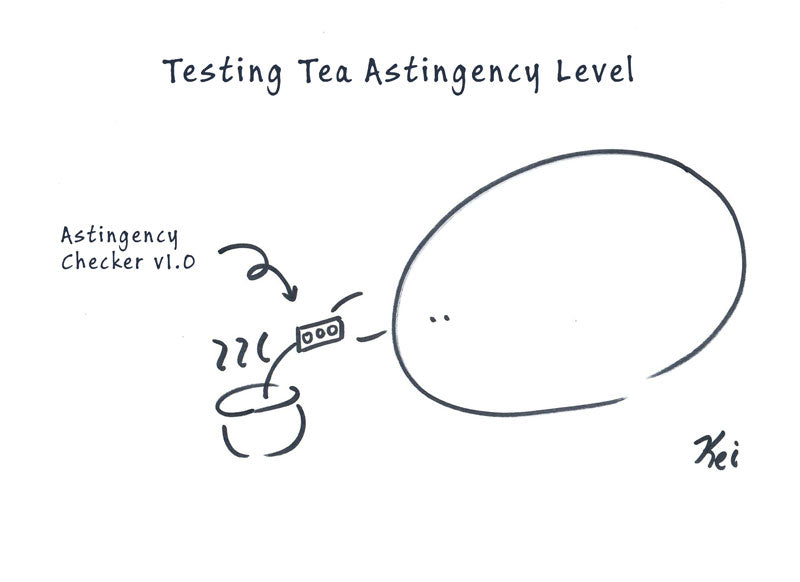
What are the Basic Categories of the Astrigency?
There are basically four different types of astringency found in everyday tea. Though this is definitely not a comprehensive list, most teas can be categorized under one of these headings:
Rough
This is the type of astringency that most of us think of when we think of the bitter, drying mouthfeel that can be quite unpleasant. After drinking a tea of this variety, your tongue will feel devoid of moisture and uncomfortable. This is definitely an acquired taste and is not usually one that many tea drinkers seek out. Anything that falls into this category is not something that you should even consider trying, unless you are a seasoned tea lover.
This is a type of astringency that is removed by having sugarcane in the soil. The Japanese Green Tea Company’s green tea is famous for removing this specific type of astringency.
This harsh sensation is typically linked to over-oxidized or poorly processed leaves, especially when harvested during hotter months or grown in nutrient-poor soil. Some budget teas may fall into this category due to rapid drying methods or lack of careful sorting. However, not all rough astringency is the result of low quality—some traditional regional teas, particularly certain Chinese or Indian varieties, intentionally retain this rugged character to balance strong regional cuisines. In small doses, it can provide contrast and structure, but too much can overpower even the boldest palates.
Metallic
This astringency is found in many Japanese teas and is unique enough to deserve its own category. It is more like rough astringency than any other category here, but it is identified more by its powerful organic taste. Some experts speculate that this type of astringency is the result of human error. The taste is so pungent that it is usually unseen in the Western world because it does not fare well in that market.
The metallic sensation can sometimes resemble the tang of licking a copper coin or the aftertaste left by iron-rich mineral water. It tends to linger on the tongue and gums, leaving a sharp edge that some describe as “bloody” or “medicinal.” This form of astringency may stem from oversteaming, improper storage, or contamination with metal particles during processing. While rare, it can also appear in teas grown in soil with high mineral content. For sensitive drinkers, even a slight hint of metallic astringency can be off-putting, but to the adventurous palate, it might offer a strangely compelling edge—especially when paired with seafood or strongly flavored foods in Japanese cuisine.
Neutral
This type is somewhere in the middle. While it will not leave you particularly uncomfortable, it will still dry out your mouth, which is not really enjoyable. It is not horrible and can actually be appealing to many connoisseurs. Even though there are many teas that have these innate properties, almost any tea can be made to have a neutral astringency. This occurs if too many leaves were used in the brewing process or if it was steeped for far too long.
Neutral astringency is often found in everyday teas that aim to strike a balance between flavor and drinkability. It typically lacks strong character but remains dependable—ideal for casual tea sessions or pairing with food. Teas like basic sencha, mid-range oolongs, or mass-market black teas often sit in this zone, offering just enough dryness to keep the flavor structured without overwhelming the palate. Interestingly, many tea drinkers become accustomed to this level of astringency over time, making it a sort of baseline for judging other teas. With proper brewing—lower water temperature, shorter steeping time, and proper leaf ratio—neutral astringency can even mellow into a smooth, balanced cup.
Stimulating
This astringency is what most tea drinkers crave. It has a unique way of making your tongue water. But at the same time, it simultaneously causes an interesting degree of dryness that is more akin to a minty, menthol-like feeling. Astringency also leaves your palette feeling cool and moist.
A good example of this is classic Darjeeling. It’s usually associated with higher-quality teas, and even then, they must be brewed to perfection. In rare cases, this sensation can last for minutes to hours, and the after-effects can last even after food consumption. This is what most folks are willing to spend good money on when they choose to invest in a tantalizing tea experience.
What sets stimulating astringency apart is its ability to awaken the palate without overwhelming it. It adds liveliness to the cup—bringing clarity to the flavors, enhancing the aroma, and giving structure to the tea's body. In Japanese teas like Gyokuro or shaded sencha, this type of astringency works harmoniously with umami richness, leaving behind a refreshing, layered complexity. Stimulating astringency is often the mark of a well-crafted tea and a skilled brewing hand—when all variables align, the resulting experience can feel almost euphoric to the seasoned tea enthusiast.
In conclusion, astringency is a very important part of what gives every tea its unique character. Knowing which teas provide which particular astringency helps you choose the tea you're likely to enjoy before you buy it.
Buy Japanese Green Tea with Less Astrigency
The Japanese Green Tea Company's green tea is famous for cutting astringency by growing tea plants in sugarcane soil. Learn more about our best-selling tea, which does not have much astringency.
This unique cultivation method enhances the natural sweetness and smoothness of the leaves while minimizing the harshness often associated with lower-quality or overbrewed teas. By enriching the soil with sugarcane, the tea plants absorb nutrients that help suppress bitter catechins, resulting in a gentler, rounder flavor profile. The outcome is a clean, refreshing cup with minimal dryness and a naturally sweet finish—perfect for both new tea drinkers and seasoned connoisseurs looking for a smoother, more enjoyable daily brew.
Get Free Bonus Books

Sign up for free to the Green Tea Club to get advice and exclusive articles about how to choose Japanese Tea, and tips, tricks, and recipes for enjoying Japanese tea.
About the author
Kei Nishida
Author, CEO Dream of Japan
Certification: PMP, BS in Computer Science
Education: Western Washington University
Kei Nishida is a passionate Japanese green tea connoisseur, writer, and the founder and CEO of Japanese Green Tea Co., a Dream of Japan Company.
Driven by a deep desire to share the rich flavors of his homeland, he established the only company that sources premium tea grown in nutrient-rich sugarcane soil—earning multiple Global Tea Champion awards.
Expanding his mission of introducing Japan’s finest to the world, Kei pioneered the launch of the first-ever Sumiyaki charcoal-roasted coffee through Japanese Coffee Co. He also brought the artistry of traditional Japanese craftsmanship to the global market by making katana-style handmade knives—crafted by a renowned katana maker—available outside Japan for the first time through Japanese Knife Co.
Kei’s journey continues as he uncovers and shares Japan’s hidden treasures with the world.
Learn more about Kei
